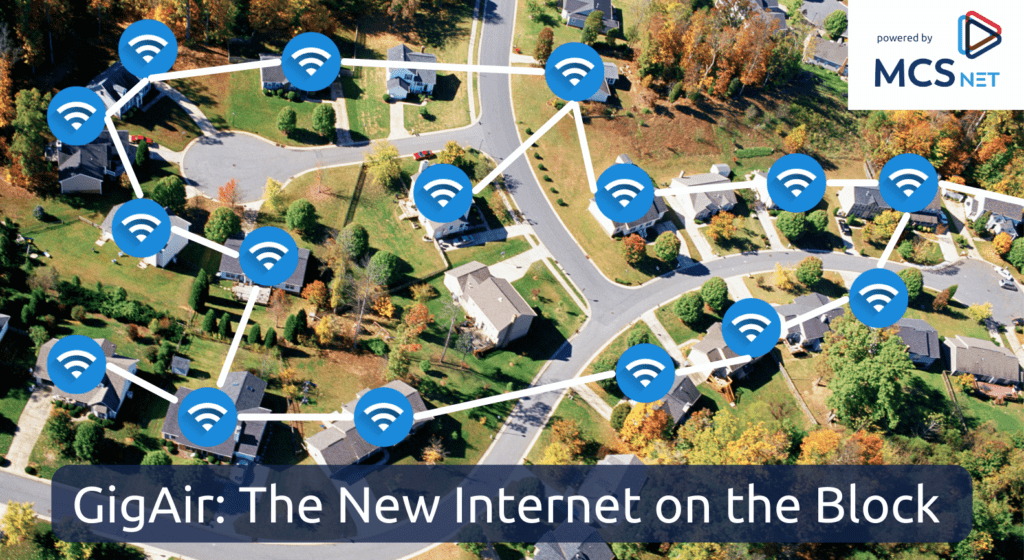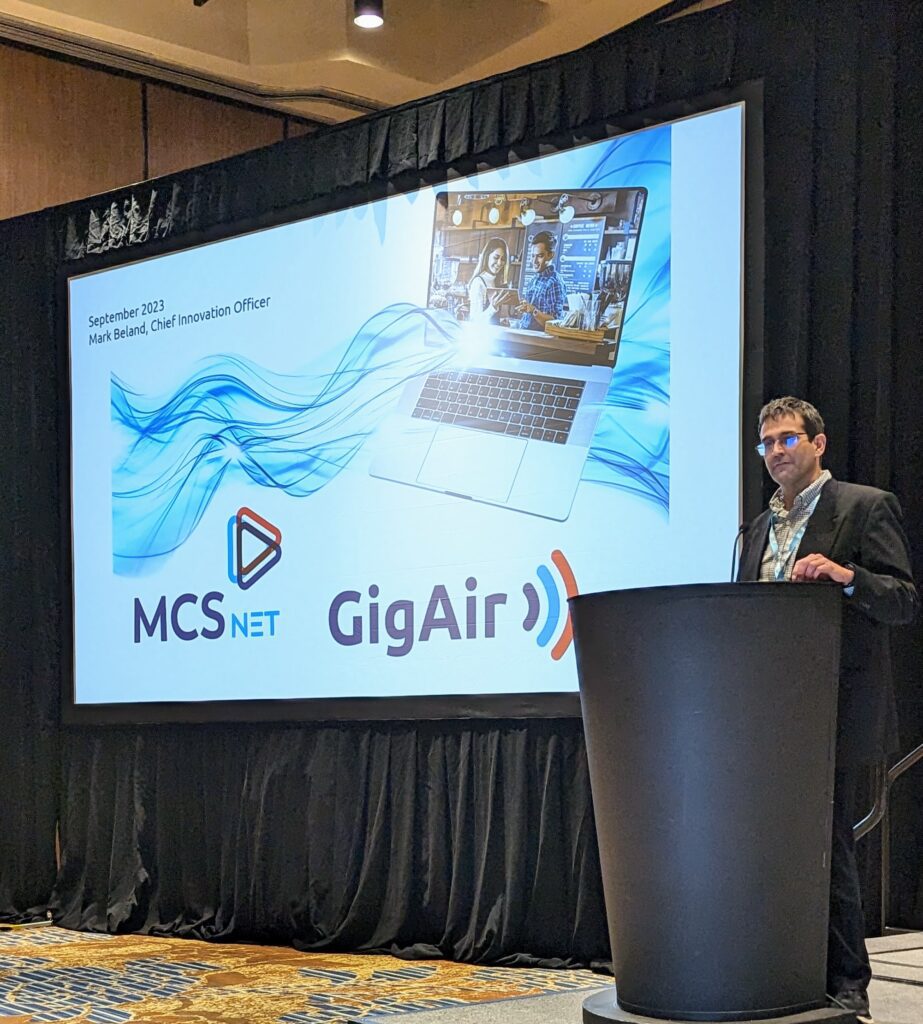
When people think of broadband, they immediately think of fiber optics, satellite, cable, and DSL. But there is an entirely new service on the block using milliwave technology and MCSnet is proud to have one of the largest implementations of this new technology right here in rural Alberta.
Meet GigAir! Now in over 50 communities across Northeastern Alberta, our rural customers are experiencing gigabit speeds thanks to MCSnet harnessing the power of milliwave technology.
What is Milliwave Technology?
Also known as millimeter wave, milliwave technology marks a new era in broadband and telecommunications applications. It uses high radio frequencies, between 30 to 300 GHz to transmit more data at faster speeds.This range of frequencies, which corresponds to wavelengths from 10 millimeters to 1 millimeter, is why it’s called “millimeter wave.”
High Frequency, High Capacity
Millimeter waves operate at higher frequencies than traditional broadband technology, which allows them to carry more data. This makes milliwave technology particularly suitable for high-bandwidth applications. In fact, of MCSnet’s almost 3,000 current GigAir customers, the average upload and download speeds are 950 Mbps down and 950 Mbps up.
Lower Latency
Because of this high-speed data transfer, this also means much lower latency compared to other technologies. GigAir has some of the lowest latency rates available which makes it the ultimate technology for gaming and video conferencing.
Shorter Range
Due to their high frequency, milliwave signals have a shorter range compared to lower frequency signals. Therefore, this technology will only work in communities with high density, where buildings are within 200 meters of each other. This is why MCSnet has launched GigAir primarily in hamlets, villages, towns, cities, and in some rural subdivisions and industrial parks.
Line of Sight
Just like its name, millimeter waves have a very narrow path and require direct and clear line of sight between the transmitter and receiver. The signal can be blocked by a single leaf. However, GigAir technology is self-healing, which means if a signal becomes blocked, the receiver will look for another transmitter within range.
Mesh Network
The other unique thing about MCSnet’s GigAir technology is that it creates a mesh network throughout the community. The milliwave signal is transported to one home or business which then connects to another home or business and so on and so forth. There is no signal degradation or speed decrease because all of the connections are tied into each other. The more homes and buildings connected to GigAir in a community, the stronger the network. In essence, you are helping out your fellow neighbourhood by being connected to GigAir in a GigAir community.
A Strong Backbone
While the milliwave technology is available for use, having high speed network capacity behind the technology is how MCSnet provides gigabit speeds wirelessly to its customers. We are taking the lightning-like speed from our fiber optic network and spreading that speed wirelessly through the community via GigAir. By building its own fiber optic network throughout its service area over the past 10 years, MCSnet has opened up future opportunities for new technology, such as millimeter waves.
How MCSnet Has Made GigAir a Success Story
Even though milliwave technology has been around for a few years, MCSnet has been the first company of its kind to implement it in a way that makes gigabit speeds scalable for the future.
At the Beginning
MCSnet’s leadership team was familiar with milliwave technology, but it took the advancement of Cambium Networks equipment to make the possibility of launching GigAir a reality. Using Cambium’s cnWave 60 GHz equipment, MCSnet started its first GigAir connection in St. Paul in September, 2021.
Innovation at its Finest
Since that first launch in September, 2021, MCSnet has successfully launched GigAir in over 50 communities across its service area. It took some trial and error at the very beginning, but thanks to the innovative spirit of our local team, starting GigAir in a new community has been finely-tuned and will continue to evolve. In fact, we were even featured in a video made by some distributors in the United States, because of MCSnet’s success.
Strategic Software Development
A large part of GigAir’s success is attributed to our in-house software development team that has built countless, custom tools to ensure the smooth planning and installation of these milliwave services. Our team is in regular contact with the engineering teams at Cambium in India and the United Kingdom and quite often our team is the one providing solutions. It is a great partnership!

The Path Forward
Creating its own fiber optic network and launching GigAir in over 50 communities is a great success story for a small town, rural internet service provider, but we are not stopping there.
Pioneer Spirit
MCSnet has been a proven pioneer and success story for how milliwave technology can provide a cost effective and timely solution to high speed internet without the high costs and long wait times of trenching fiber optic cables. By using a combination of fiber and wireless broadband technologies, MCSnet has proven that there are multiple paths to achieving its vision of High Speed Internet Everywhere.
Growing Forward
There are more wireless technologies on the horizon that MCSnet is currently testing. We are currently waiting for federal regulators to approve the 6 GHz radio spectrum which will allow us to launch faster wireless speeds for more of our rural customers. This spectrum is similar to the Wi-Fi 6 routers you use in your home. Once 6 GHz radios are available to use, customers will see speeds well beyond the CRTC’s minimum standards of 50/10.
In Conclusion
What MCSnet has achieved with GigAir just goes to show that we don’t need to rely on the big Telcos or billionnaires to lead innovation. We are doing it right here in St. Paul, Alberta. By focusing on what our local internet service providers are doing instead of always looking to the mega national companies, you may be surprised at what we can accomplish.
To learn more about GigAir and if it is available in your community, please visit our website at https://mcsnet.ca/internet/gigair/.


